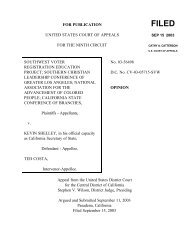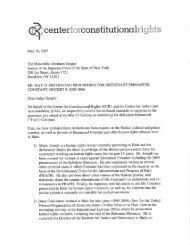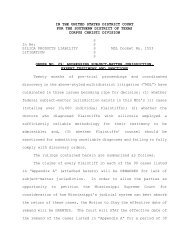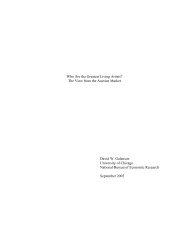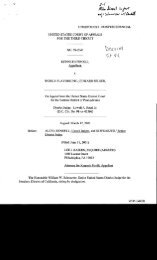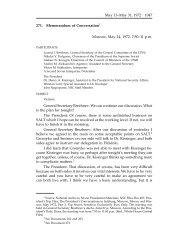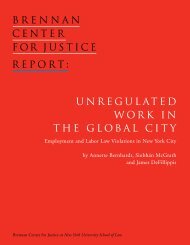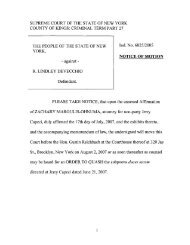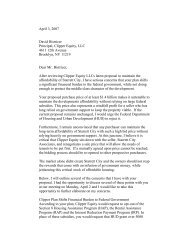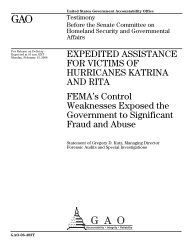Strengthening Schools by Strengthening Families
Strengthening Schools by Strengthening Families
Strengthening Schools by Strengthening Families
Create successful ePaper yourself
Turn your PDF publications into a flip-book with our unique Google optimized e-Paper software.
“ The abuse<br />
cases, we’re<br />
catching,” said<br />
one Bronx<br />
teacher. “But<br />
the neglect<br />
cases we may<br />
be aware of?<br />
We’re not very<br />
successful in<br />
intervening.<br />
22<br />
”<br />
reporting Cases of abuse or neglect<br />
To call or not to call? For teachers, this can be a tough decision.<br />
As a group, New York City’s educators should be well-positioned to spot potential cases of child abuse<br />
or neglect. They see the city’s 1.1 million school-age children nearly every day, and are required <strong>by</strong><br />
law to call the state child abuse and neglect hotline if they suspect any such problems in a family.<br />
But many teachers and other school staff say they are poorly equipped to handle this responsibility,<br />
according to interviews with two dozen teachers, guidance counselors and social workers conducted<br />
<strong>by</strong> the Center for New York City Affairs. Most teachers reported that they have had only minimal<br />
training to deal with possible cases of abuse and neglect. Many yearned for more access to social<br />
services, which they felt could be more helpful than a call to the authorities.<br />
Above all, these interviews and other research done for this report revealed that different schools<br />
have vastly different approaches to dealing with the problem. Some educators are too eager to report<br />
suspected abuse or neglect to the State Central Register (SCR), launching unwarranted investigations.<br />
Others won’t call in a problem they see. “A lot don’t want to take that responsibility,” says Jean<br />
Thomases, a consultant and veteran in the city schools and social work. “They don’t want to interfere,<br />
they don’t see it as their role.”<br />
The result is a schizophrenic system in which schools on the same block, serving the same children,<br />
can have very different responses to potential cases of abuse and neglect. Some schools make many<br />
calls, while others make almost none, according to an analysis <strong>by</strong> the Center for New York City Affairs.<br />
The analysis of 2007–08 Department of Education (DOE) attendance data shows, for example, that<br />
50 elementary schools made no reports of educational neglect to the State Central Register despite<br />
the fact that more than 15 percent of their students had received at least one “407” attendance alert<br />
automatically issued <strong>by</strong> the DOE for excessive absences. On the other extreme, staff at P.S. 41, a<br />
school of 760 pupils in the Brownsville section of Brooklyn, made 149 calls to the state hotline for<br />
educational neglect, according to DOE data.<br />
The center conducted its interviews with teachers, guidance counselors and social workers in the 18<br />
months following the 2006 murder of Nixzmary Brown. Each interview subject completed a survey<br />
designed <strong>by</strong> the center. In general, interviewees were granted anonymity.<br />
All reported they had received the mandatory two-hour child abuse training course given to teachers<br />
at the beginning of their careers, and most felt their training was adequate for dealing with the most<br />
serious problems. However, many said they were less certain about how to deal with less urgent, but<br />
far more common problems. “The abuse cases, we’re catching,” said one Bronx elementary school<br />
teacher. “But the neglect cases we may be aware of? We’re not very successful in intervening.”<br />
Some teachers said their principals offer lots of guidance and support in finding social services for<br />
troubled families, while others leave teachers to shift for themselves.<br />
Is It negleCt or Poverty?<br />
Almost all those who responded to the survey reported having students over the years who suffered<br />
from poor care. Some came to school dirty or in filthy clothes. Others were too often ravenously<br />
hungry. Some lacked coats in the cold weather or eyeglasses to see the blackboard. And there were<br />
frequent problems with class attendance, concentration, depression or excessive aggression. All can be<br />
signs that a child may be neglected, abused or in some way poorly treated at home. But they are also<br />
common side effects of poverty, problems that could be helped <strong>by</strong> the intervention of a community<br />
social services group or an industrious outreach worker.



